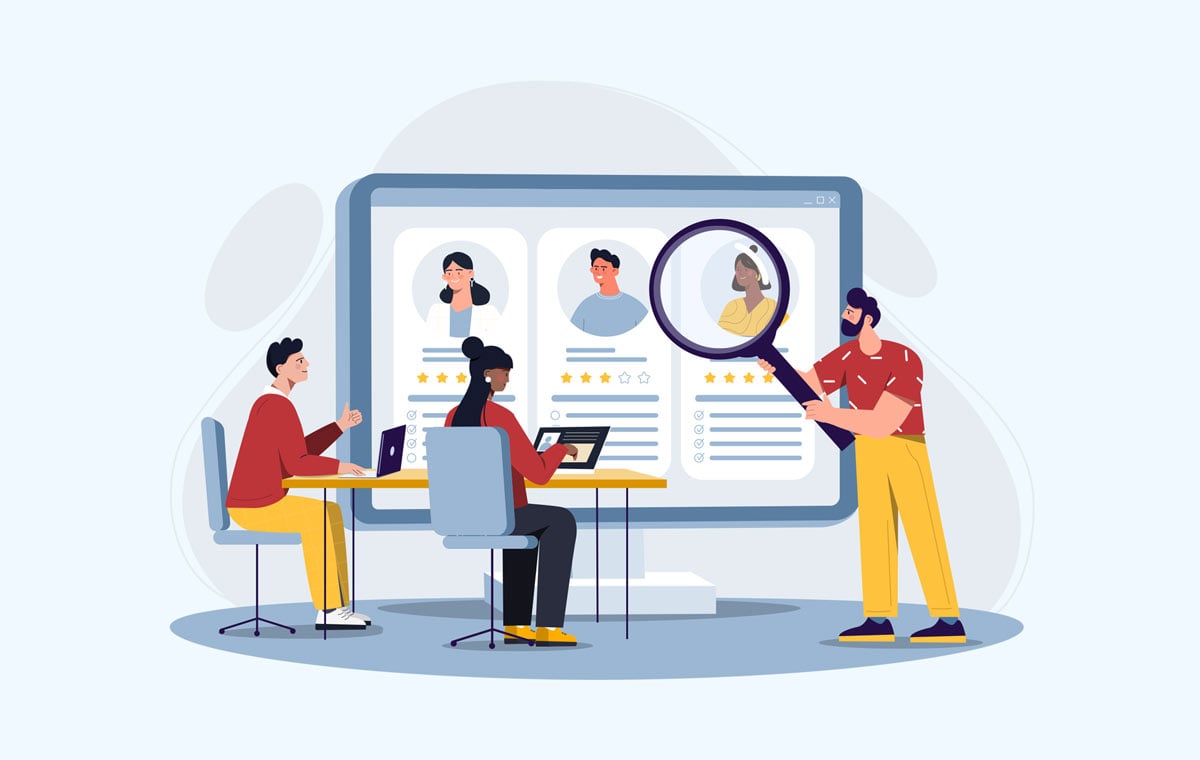As more people become aware of the heartbreaking history of marginalization and discrimination inside the United States and beyond, many organizations are focusing on ways they can help to ensure these continued abuses truly become a thing of the past.
They want to be active participants in bringing about major cultural changes—societally and within their own teams.
Seeking to rectify past wrongs and persistent social problems, diversity, equity, inclusion and belonging (DEIB) efforts are proliferating. However, outlining a meaningful DEIB plan and approaching inclusion goals authentically is a tricky enterprise.
InclusionHub, in partnership with Salesforce’s Office of Accessibility, sat down with Camille Edwards, a DEI educator and Director of Diversity, Equity, and Inclusion at Friends Academy in Locust Valley, New York, to discuss effective strategies organizations can adopt when establishing a DEIB plan.
Defining Diversity, Equity, Inclusion & Belonging
While interlocking terms—often conflated in casual conversations—it’s important to distinguish between diversity, equity, inclusion, and belonging. Each has its own particular aims and bundle of issues.
By setting each concept within its own sphere, teams and organizations are more likely to experience success toward their DEIB goals.
Diversity
As a DEI practitioner and educator working with young people and adults, Edwards believes diversity “is always about representation as it relates to all of the ways that people can be different from one another. Anything that we can be different from one person to the next is a marker of diversity.”
This includes the usual categories such as race and ethnicity, gender, disability status, age, religion, socioeconomic background, or sexual orientation. But it can also entail less discreet markers such as political affiliation, marital status, family background, hobbies and interests, past professional experiences, and other lifestyle choices.
“It's simply the presence of difference,” she says.
Diversity also includes the demographic data organizations may keep, such as “statistics relating to how many more or fewer persons of this identity we have this year or had last year, or in this space versus another space,” continues Edwards.
Equity
Related but contrasting with the more traditional concept of equality, equity is “about boundaries and marginalization,” explains Edwards. “That’s where social justice is in direct relationship to equity because social justice is about taking all of those things that we find inequities in and righting those wrongs, correcting those imbalances, and bringing those into the forefront.”
While equality connotes a certain degree of sameness, such as everyone abiding by a common 20-day PTO policy, equity aims to ensure everyone has what they need to be on a similar playing field from the beginning. It’s not really an equitable race if one person, metaphorically, starts a mile ahead of the other participants.
To achieve greater equity, Edwards suggests teams ask themselves: “What does this person need to have a seat at the table? What do they need to have a place in this conversation?”
Inclusion & Belonging
Perhaps the most closely related of the DEIB concepts, inclusion and belonging still carry key differences.
“Inclusion is whether or not you feel like a part of the whole, whatever the whole is,” Edwards says. “It's about whether or not you feel like you're a part of the larger entity that is being discussed. It's feelings of being welcomed.”
Alternatively, belonging pertains to whether you “experience feeling seen, heard, known, and valued.” It’s about being acknowledged.
If you’re wondering whether your organization has a culture of belonging, Edwards asserts colleagues and employees should be able to assent to the following questions:
- Do I feel like people see me in this space?
- Would they know if I wasn't here?
- Do I feel like when I speak not only am I heard, but people listen?
- Do I feel worthy?
- Do I feel valuable?
- Do I feel like people genuinely know me as an individual, unique in my identity from the other people that are sitting in this space?
In a way, belonging is the next step beyond inclusion. It’s another level in cultural progress.
So where does an organization get started when establishing DEIB goals?
How to Establish & Outline DEIB Goals
When asked where organizations should begin, without hesitation, Edwards says, “No matter what industry you’re in, start with mission, vision, and values.”
She believes each of these provides the lens through which everything you do must pass.
“Your mission is your manifesto, right,” she continues. In an ideal world, “where everything is happening the way that it should, this is your North Star. This is what we're here to do. This is who we're here to be. This is what we're always reaching and striving for.”
As a leader or senior manager, answering a few essential questions can help clarify your mission, vision, and values:
- Is this how we want to continue?
- Do we feel that these values are embodied in the approach we're taking to whatever it is we're about to do related to DEIB?
- As you look at that vision, mission, and values, what inspires you?
- What about how we’re doing this work grabs you?
- What do we say we do already?
- How should we be doing it?
- How will we know when we’ve reached our goals?
As an outgrowth of your mission, you should identify several DEIB-related values that motivate your course of action.
“Whether or not you drive with three core values or a set of seven,” Edwards explains, “those values should become a filter or rubric for where you start.”
Your vision statement should project your organization into the future, even 10 or 15 years out.
Your vision, mission, and values can each be used to filter out noise, focus your path forward, and determine what progress looks like within your organization’s particular context.
These three elements—mission, vision, and values—can be used for “checking in with yourself,” she says. You want to ensure you are doing work that is specific, measurable, achievable, relevant, and time-bound, Edwards argues—constraints derived from the management acronym for SMART goal setting, coined by consultant George T. Doran.
If your DEIB work isn’t “guided by the mission, grounded in values, and really harnessed around good goal setting, you don't know where you're starting yet,” shares the 15-year DEI veteran.
Advancing DEIB at your organization certainly depends on your position within the company, as well. Within your sphere of influence, Edwards believes answering the following questions can clarify your course of action:
- What is your place in this organization based on your role or functionality?
- What decisions are you responsible for making?
- Who do you make those decisions in relationship with?
- How do you get the lay of the land so you can begin to figure out where you are and where to start?
- If you are an organization that realizes you’re not where you need or want to be with regards to DEI, where should you start?
One DEIB Quick Win Every Organization Can Do
No two DEIB plans will look the same for two organizations. However, there is at least one concrete thing every business or team can do to begin moving the needle:
Hold focus groups.
Investigate and identify how other people view your organization or describe your present culture, including things related to DEIB. This can be quantitative, as is often done through surveys, but qualitative methods may be even more powerful.
“It is just as valuable to collect qualitative data and testimonials,” observes Edwards. “Run focus groups. Collect testimonials. Interview people. Ask them how long they've been in an organization and how they would describe the culture five years ago versus today.”
The open-ended nature of qualitative research facilitates powerful emotional insights as well as perspectives that can’t be anticipated within quantitative frameworks.
You absolutely should conduct internal focus groups as well as external ones, something especially helpful for determining whether your DEIB efforts are taking root.
“If people can't talk about [your DEIB goals] and articulate them within the organization,” Edward says, “then no matter what you think you've set out to do, it's not translating. It has to be lived. It cannot be espoused only.”






Leave a Comment